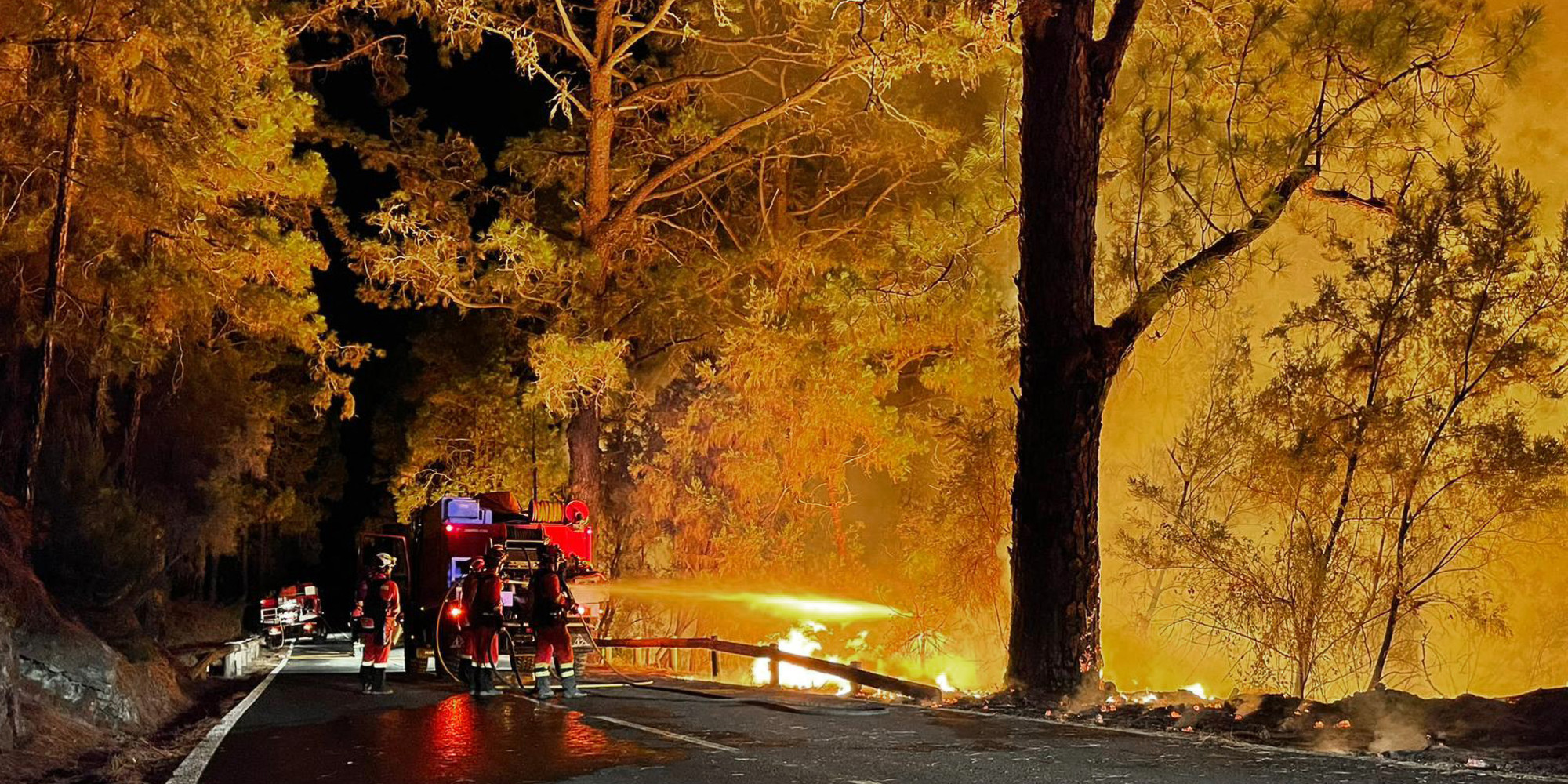The fire that devastated nearly 4,000 hectares on the island of Tenerife, in the Spanish Canary archipelago, off the west coast of Africa, began to “normalize” on Friday, after 48 hours of uncontrolled spread and unpredictable due to complex weather conditions. This forest fire, which started on Tuesday evening, burned around 3,800 hectares over a perimeter of 42 kilometers, according to the latest report from the authorities, mobilizing more than 250 firefighters, 16 aircraft, but also more than 200 members of the Special military unit of the Ministry of Defense (UME), which intervenes on the most worrying fires in Spain.
“Tonight, the fire and the weather behaved ‘normally’. The two previous nights, we had observed quite unusual winds, temperatures and even behavior of the fire”, said Fernando Clavijo on Friday morning. , the president of the regional government of the Canary Islands, during a press conference. The fire, he insisted, “behaved during the night in a more normal way”.
3,000 people evacuated
However, it has not yet been stabilized and the authorities will study in the afternoon the possibility of lifting the confinement of La Esperanza, a locality located near the northern flank of the fire, where the efforts of the firefighters are concentrated. About 3,000 people have been evacuated and nearly 4,000 confined since the outbreak of the fire, while the Teide National Park, very popular with tourists, has been closed since Thursday evening.
The cloud of smoke, visible on the satellite images, exceeded the summit of Teide, a volcano which overlooks the island and the highest point of Spain with its 3,715 meters of altitude, while the main foci of the fire are located on wooded hills about twenty kilometers below, near several villages.
The island has experienced larger fires in terms of burned area, especially in 2007, but the weather conditions and topography of this one made Fernando Clavijo say on Thursday that the archipelago was facing its “most complicated fire “for 40 years.
Expected temperature rise
The blaze created “its own weather conditions”, according to authorities, with a cloud of smoke several kilometers high. “We recovered some humidity in the air on Thursday evening, but we know that from today it will drop again”, in particular due to a rise in temperatures, said the meteorologist Vicky Palma during the press conference.
If the intensity of the flames decreased during the night, the head of the forest services, Pedro Martínez, warned that in the hottest hours, the hearths could “reactivate” and that the fire remained active on “almost all” of its perimeter.
